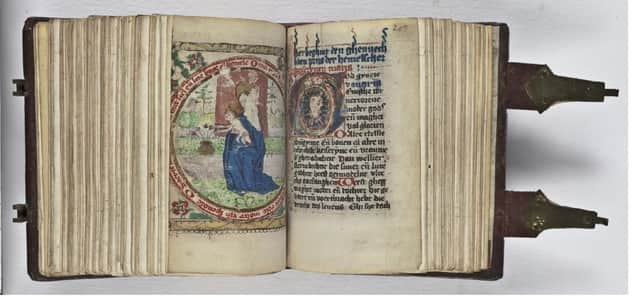Medieval Scots used art the way we use social media
This article contains affiliate links. We may earn a small commission on items purchased through this article, but that does not affect our editorial judgement.


The “postcards on parchment” revealed status, allegiances and values among the wealthy classes in the 14th and 15th centuries.
The painted images included patron saints, the Virgin Mary and child and highly decorated lettering, which were fixed between the pages of medieval prayer books for safekeeping by the recipients.
Advertisement
Hide AdAdvertisement
Hide AdArt historian Dr Kathryn Rudy, of St Andrews University, found nearly 300 of the lost artworks, previously classified as manuscript illuminations, in library collections across the Low Countries and in Scotland and England.
• READ MORE: Surgery plan to save MacBeth’s birnam oak
Dr Rudy, who has studied the works for a decade, discovered they were not part of the original manuscripts but had been inserted at a later date by their owners.
When well-read prayerbooks required to be rebound, the loose paintings were trimmed and fixed inside as permanent mementoes which now provide a record of their social bonds.
Now reclassified, the medieval artworks are now included in Dr Rudy’s new book, Postcards on Parchment: The Social Lives of Medieval Books.
Dr Rudy, senior lecturer in the School of Art History at St Andrews, said yesterday: “In some ways, medieval people were similar to us in that they traded small images as a way to forge social bonds, just as we post images on social media sites today to reveal our status, allegiances and values.
• READ MORE: Pictish stones to be put in new Ballater station
“Recipients of these small gifts would form a favourable memory of the giver each time they gazed upon the picture.
Advertisement
Hide AdAdvertisement
Hide Ad“These were people who longed for saturated colour in a grey world of wood, stone and earth. These small, colourful pictures offered a brilliant reprieve, and these intriguing and previously unfamiliar images were traded and cherished, shedding light into the life and relationships of those in medieval times.”
Dr Rudy added: “In the middle ages, a book might cost as much as a house. Somebody might only own a single book, and so that was most likely to be a prayer book.
“These ‘postcards on parchment’ would be kept among the pages for safekeeping.”
DOWNLOAD THE SCOTSMAN APP ON ITUNES OR GOOGLE PLAY